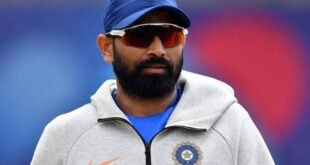By Adv, Lokendra Malik,
“As far as minorities are concerned, I have no hesitation in saying that a different kind of mentality works that a young from a minority will not be appointed. It is not in the mind of judges but at government level”, said Justice Govind Mathur, who retired as Chief Justice of Allahabad High Court last month, interacting with the media. Justice Mathur’s remarks deserve serious consideration. With a sanctioned strength of 34 judges including the Chief Justice of India, currently, the Supreme Court has only one Muslim judge, one woman judge, one Parsi judge, one Christian judge, one Dalit judge, but, no Sikh, no Buddhist, no Jain, and no Adivasi. It reflects the grim state of the underrepresentation of minorities in the Apex Court. The Supreme Court had several brilliant Muslim judges ever since its establishment by delivering thousands of landmark judgments that have enriched the discourse of justice and legal scholarship. Out of them, four judges, namely Justices M. Hidayatullah, M. H. Beg, A. M. Ahmadi, and Altamas Kabir, graced the office of the Chief Justice of India. Justice Hidayatullah served all three high constitutional offices-Chief Justice of India, Vice-President, and the Acting President of India. Other Muslim judges of the Supreme Court were: Saiyed Fazl Ali, Ghulam Hasan, Syed Jafar Imam, Syed Murtaza Fazl Ali, Baharul Islam, V. Khalid, Fathima Beevi, Faizanuddin, S Sagir Ahmad, S. S. M Qadri, Aftab Alam, M Y Eqbal, F M Ibrahim Kalifulla. Presently, Justice Abdul Nazeer is the only Muslim judge in the top court. Besides this, two High Courts have Muslim Chief Justices-Justice Kureshi in Tripura and Justice Mohammad Rafiq in Madhya Pradesh today. Both of them will retire next year. There is a general belief in society that the Supreme Court should have an inclusive and diversified bench that could represent all sections of society. Let me throw some light on this issue of great public importance.
It is pertinent to mention that Muslims constitute around fifteen percent of India’s total population, but their representation in the higher judiciary is minimal. Something needs to remove this imbalance given our national commitment and secular credentials. As of now, the Supreme Court has only one Muslim judge, and there are only two Muslim Chief Justices in the High Courts. There are not more than a dozen Muslim judges in the High Courts across the country. Many people rightly believe that our judge-makers should take necessary measures to give an adequate representation to the minorities in the higher judiciary that decides the legal destiny of the nation. It is indeed a serious issue that needs the urgent attention of the collegium that is the real judge-maker. It cannot blame the government for all this situation. It should take responsibility to diversify the higher judiciary. The government’s role comes later. If the collegium has strong willpower to make the judiciary inclusive and diverse, the government cannot have any objection. But, first, the collegium should start its business by appointing the judges of the Supreme Court from all sections of society. There is no dearth of brilliant lawyers among the minorities. Some of them can also be considered for judicial positions in the constitutional courts.
Surprisingly, there is a constant deadlock in the Supreme Court collegium since September 2019 when Chief Justice S. A. Bobde assumed his office. The last time an appointment of a judge in the Supreme Court was made in September 2019 during then CJI Gogoi’s tenure. But during the chief justiceship of S. A. Bobde, not even a single appointment of a Supreme Court judge could be made because of the impasse in the collegium. Justice Bobde has perhaps become the first CJI, who could not recommend even a single appointment of a Supreme Court judge. However, he tried his best to build a consensus in the collegium by summoning several collegium meetings, but he could not convince some of his colleagues to finalize the names of judges for the top court. Seniority and High Courts’ representation play a major role in selecting the judges to the top court, and some collegium members were not in favor of relaxing the seniority norms. As such, there is no hard and fast rule of making seniority-based appointments in the higher judiciary. In many cases, the collegium has relaxed seniority criteria in the past. In the decision-making process of the collegium, the CJI cannot ignore the views of his colleagues. If two or more collegium members oppose a name proposed by the CJI, such a name cannot be approved at all. But, the four collegium members can also not finalize the name of a judge if the CJI disagree. The four collegium members cannot send their recommendations to the President directly. Only CJI makes correspondence with the President and the Central Government about judicial appointments. But the CJI also needs to carry the collegium members with him.
Given the above discussion, it is submitted that the Supreme Court collegium led by CJI Ramana may consider acting with collegiality to protect the independence, integrity, and credibility of the judiciary. The collegium should break the deadlock and start its work given the vacancies of judges in the Apex Court and the High Courts. In addition, the arrears of cases also need serious attention from the judge-makers. They should select secular and meritorious judges from diverse backgrounds like women, minorities, Dalits, Adivasi, etc. An inclusive judiciary is the need of the hour. The Supreme Court is the guardian of the Constitution and it should maintain its momentum of great judicial creativity and activism with a sincere commitment to the cause of administering free and fair justice to all.
***
The author is advocate at Supreme Court of India, New Delhi, Email : advdrlmalik@gmail.com
Mobile-+91-9599261997
 Al Haqeeqa
Al Haqeeqa





